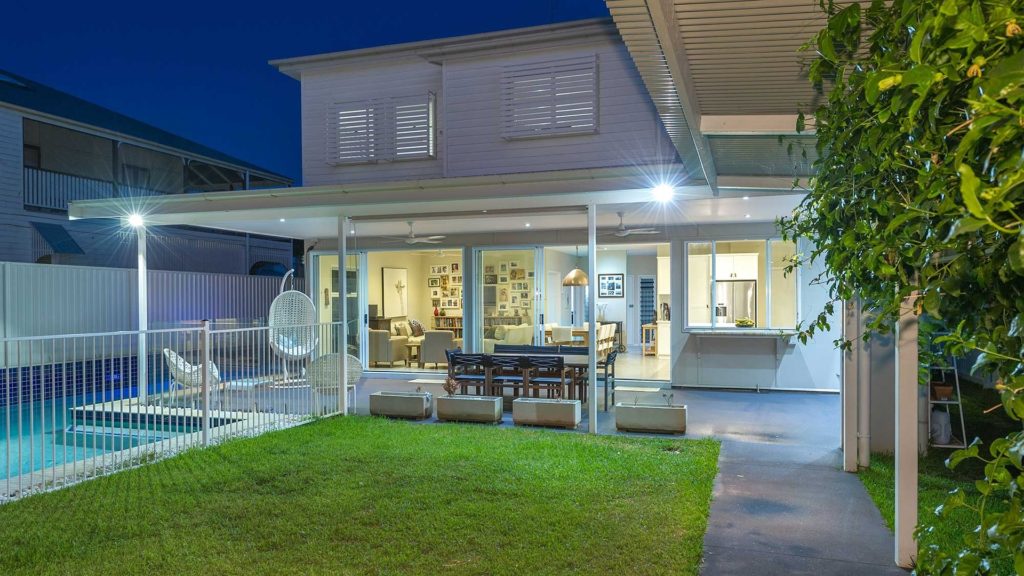
We all know how good composite decking from https://www.dinodecking.co.uk/ looks, but we’re not all aware of how to put the boards down. If you’re planning on putting composite decking in your garden follow the instructions in this article as they’ll show you how.
Please note that this article assumes you have planned where you’re going to place your decking and you’ve prepared the ground area that the decking will sit on.
Step One: Building the Frame
Start with the outer frame and fix the joists together along the site. Bolt or drill the joist using galvanised screws. Use one screw on the top edge and two screws on the side of the joists.
Step Two: Attaching the Frame to your Home
This step is only required if you’re attaching the deck to your home or another building. Fix your decking to a wall using a ledger board. The board should be the same length as your decking.
Hold the ledger board straight against your wall and drill holes every 16 inches, making sure there are no wires in your way.
Offer the ledger board(s) up to the wall marking with a pencil where the holes need to be. Drill holes that are at least 7cm deep so that your screws can anchor your decking’s frame to the wall.
Hammer anchor bolts into the holes and fix lag screws. Always use galvanised screws as they help to prevent rust. Try not to tighten the screws too much or you may crush the ledger board. Once all is secure, you can attach your frame to the ledger board. This will ensure your frame is securely attached to the wall.
Step Three: Fitting the Joists
Now it’s time to fit the joists. The joists are long timbers that have been pressure-treated, and they sit between the outer frame. The spacing of your joists depends on where you wish to place your boards. The centre spacing between each of the joists, when used with horizontal boards, should be no more than 400mm. If you’re using diagonal boards the spacing should be a little less than 300mm.
If you have a small deck you might be able to use 3 joists, one in the centre and 2 between the central joist and outer frame. Attach your joists using galvanised nails and joist hangers. An electric drill will do the job nicely or you may wish to use a nail gun instead. Check that your joists are at the correct angles before you begin, otherwise, your deck will be wonky.
Step Four: Fitting Newel Posts
If you’re planning to fit balustrading then follow this step, if you’re not you can start fitting the boards.
Newel posts are attached to the outer frame and have your railings resting on them. You need to fit your newel posts before you lay your deck if you plan to have balustrading.
Use a circular saw or a jigsaw and cut out the chunk of wood where the post’s foot will be. You can also use a saw and chisel to do this. Cutting a chunk of wood out will allow the post to sit cleanly on the joists.
Step Five: Fitting the Boards
Now you have built your load-bearing frame you can start laying your boards. To begin with, place the first board on the edge of your frame, the edge that’s closest to your home or building. Leave a small gap in case the board needs to expand during wet weather. A gap of 3-5 mm is sufficient. A gap this size should also be left between your newel posts and boards.
Please make sure you always position your boards on your frame before you fix them in place. Once you are happy with the position of the boards you can start fixing them. Please make sure that the frame of your deck is covered sufficiently.
Fix all of your boards at each corner but please make sure that you pre-drill your holes rather than hammering in nails. Nails can cause the boards to crack. Don’t forget to fix your boards in the centre when they pass over noggins or joists.
Keep fitting the boards until you reach the edge of the decking. You may need to cut the boards if they have not been pre-cut. it’s better for you to overlap the deck’s frame first before cutting the boards to the length you require.
Step Six: Edging the Deck
Now it’s time to get the deck frame facing fitted. When you come across a frame’s edge that’s visible and exposed you should attach a board to it. Measure the outer edge of the frame and find a good sized board to fit on the outside. Countersink the edge and screw it to the frame. Please make sure that the board is in line with your decking’s top face.
If you don’t have any experience building decking please make sure you follow the manufacturers instructions. Alternatively, you may want to consider hiring someone to build your decking for you.


